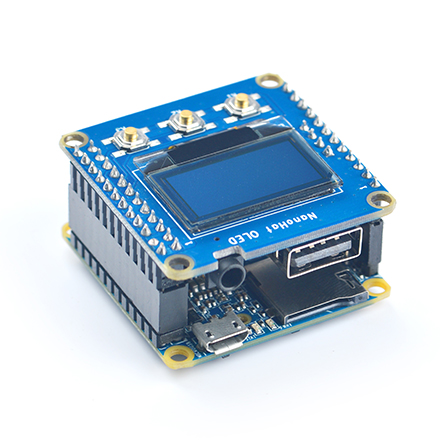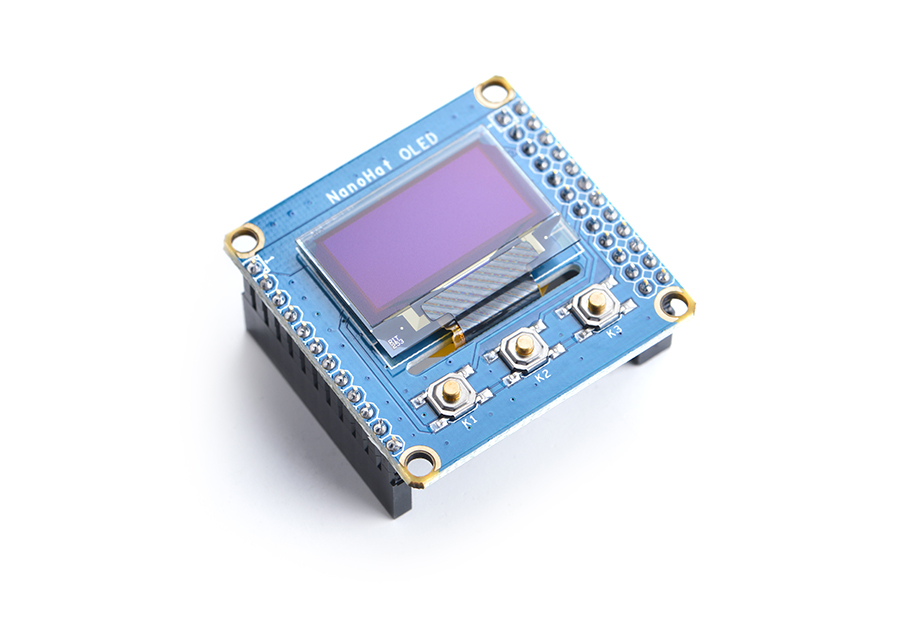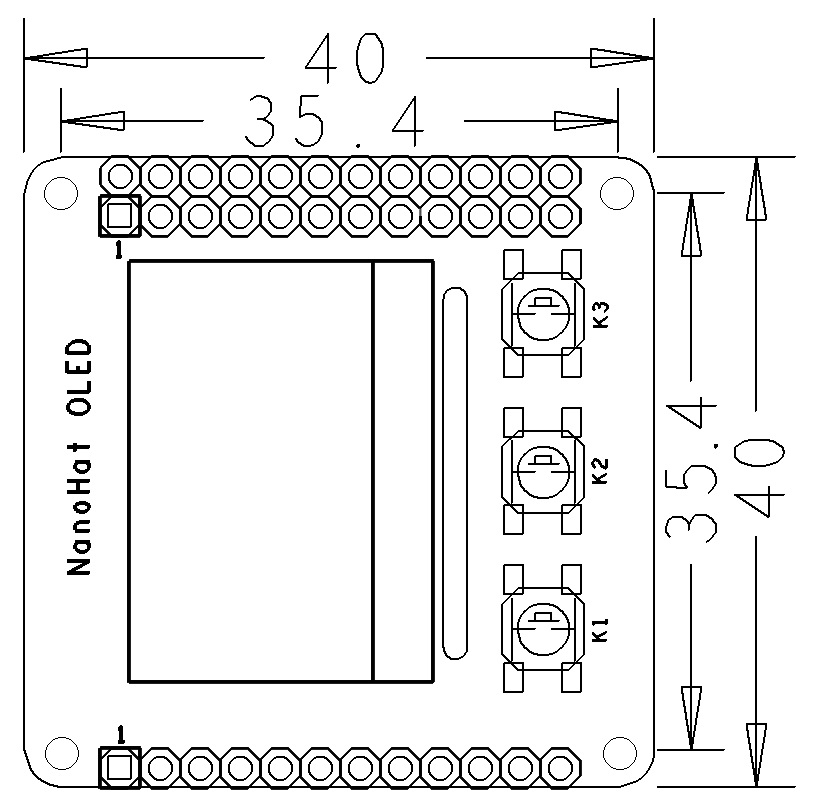Difference between revisions of "NanoHat OLED"
(→Resources) |
(→Install Software) |
||
| Line 58: | Line 58: | ||
==Install Software== | ==Install Software== | ||
| + | To make a master device work with a NanoHat OLED you need to install a customized ROM on that master device. FriendlyElec names these image files with "xxx-OLED-xxx". For the NanoPi NEO/Air/NEO2 you need to download and run an image whose name is like "xxx-OLED-xxx". | ||
There are some code samples for NanoHat OLED. You can get these samples by running the following commands under Ubuntu core:<br /> | There are some code samples for NanoHat OLED. You can get these samples by running the following commands under Ubuntu core:<br /> | ||
<syntaxhighlight lang="bash"> | <syntaxhighlight lang="bash"> | ||
Revision as of 15:54, 25 May 2017
Contents
[hide]1 Introduction
- NanoHat OLED is a small and cute monochrome OLED module with low power consumption. It is 0.96". Its resolution is 128 x 64. It communicates with a master device with I2C.
- The NanoHat OLED module has the same form factor as FriendlyElec's NanoPi NEO. It can be stacked on a NanoPi NEO.
- It has three onboard programmable user buttons, a 2.0mm pitch 4-Pin I2C connector.
2 Hardware Spec
- LCD Size:0.96"
- Resolution: 128 x 64
- High Contrast, Low Power Consumption
- 3 x Onboard Button
- PCB Dimension(mm): 40 x 40
- GPIO Pin Description
Pin# Name Linux gpio Pin# Name Linux gpio 1 SYS_3.3V 2 VDD_5V 3 I2C0_SDA 4 VDD_5V 5 I2C0_SCL 6 GND 7 NC 8 NC 9 GND 10 NC 11 K1 0 12 NC 13 K2 2 14 GND 15 K3 3 16 NC 17 SYS_3.3V 18 NC 19 NC 20 GND 21 NC 22 NC 23 NC 24 NC
Only GND and 5V on the 12-Pin land are connected and the rest pins are open. For more details on the 12-Pin connector refer to NanoPi NEO/Air/NEO2's wiki site.
3 Hardware Setup
Currently only the NanoPi NEO, NEO2 and NanoPi NEO Air work with this module.
The NanoHat OLED module has the same form factor as FriendlyElec's NanoPi NEO. It can be stacked on a NanoPi NEO/NEO2/Air.
Here is a hardware setup:

Applicable Boards:
NanoPi NEO
NanoPi NEO Air
NanoPi NEO2
NanoPi NEO Plus2
4 Install Software
To make a master device work with a NanoHat OLED you need to install a customized ROM on that master device. FriendlyElec names these image files with "xxx-OLED-xxx". For the NanoPi NEO/Air/NEO2 you need to download and run an image whose name is like "xxx-OLED-xxx".
There are some code samples for NanoHat OLED. You can get these samples by running the following commands under Ubuntu core:
git clone https://github.com/friendlyarm/NanoHatOLED.git cd NanoHatOLED sudo -H ./install.sh
5 Run Code Samples
After the code samples are installed they will automatically run on system reboot and display date and time
Here are the definitions of the NanoHat OLED's three user buttons:
K1 -> Show date & time;
K2 -> Show master device's system status: IP address, CPU usage, RAM, CPU temperature and etc;
K3 -> Shutdown. After this button is pressed system will not be shut down immediately but will pop up a Yes/No dialog. Pressing K1 switches between Yes and No, and pressing K2 is to confirm the selection.
6 Resources
- [Schematic](Schematic NanoHat OLED.pdf)
- [Datasheet](NanoHat OLED Datasheet.pdf)
7 Update Log
7.1 April-27-2017
- Released English Version

